PolyNet poseter presentation.

3D shape representation and its processing have substantial effects on 3D shape recognition. The polygon mesh as a 3D shape representation has many advantages in computer graphics and geometry processing. However, there are still some challenges for the existing deep neural network (DNN)-based methods on polygon mesh representation, such as handling the variations in the degree and permutations of the vertices and their pairwise distances. To overcome these challenges, we propose a ...
We propose a DNN-based method (PolyNet) and a specific polygon mesh representation (PolyShape) with a multi-resolution structure. PolyNet contains two operations; (1) a polynomial convolution (PolyConv) operation with learnable coefficients, which learns continuous distributions as the convolutional filters to share the weights across different vertices, and (2) a polygonal pooling (PolyPool) procedure by utilizing the multi-resolution structure of PolyShape to aggregate the features in a much lower dimension.
Whatch more videos on our YouTube channel.
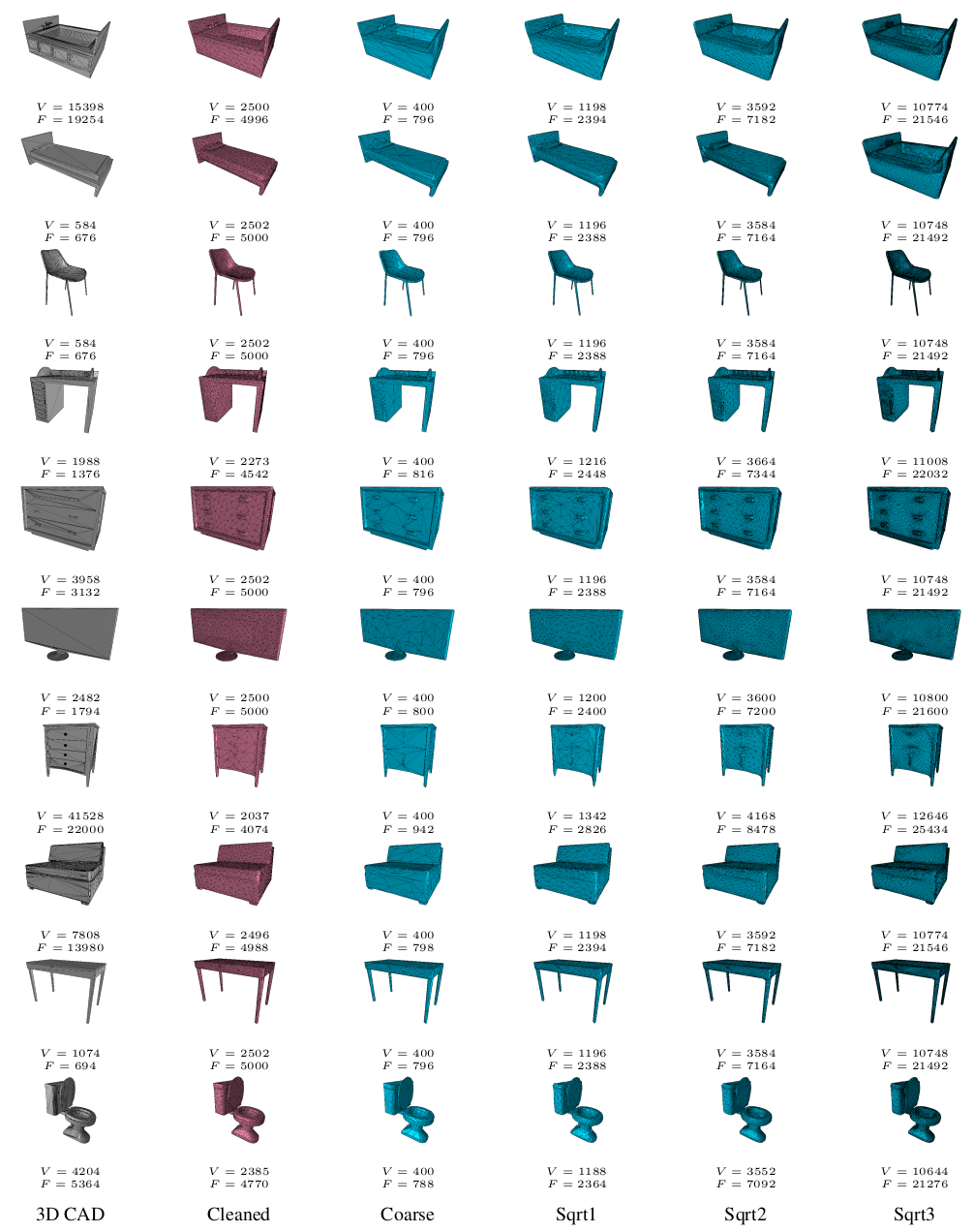
PolyShape processing results on some samples of ModelNet-10 dataset based on √3-subdivision. Sqrt1 to Sqrt3 refer to the output of the PolyShape procedure after each level of subdivision. Note that V and F refer to the number of vertices and faces for each shape.

Joint and marginal distributions. Visualization of (a) the learned joint distributions and (b) the marginal distributions approximated by polynomial functions of degreed 2 on the ModelNet-10 with the √3-subdivision.
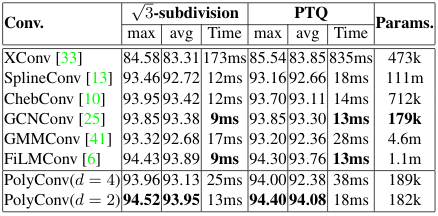
Classification accuracy (Acc%), testing time, andnumber of parameters in only convolution layers on theModelNet-10 with both subdivision strategies for the var-ious convolution operations in PolyNet.

Classification accuracy (Acc%) and mean Aver-age Precision (mAP%) of PolyNet compared to the state-of-the-art methods based on different representations on theModelNet-10 and the ModelNet-40 datasets.
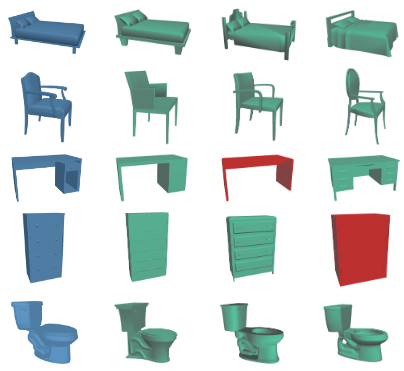
The retrieved shapes for the given queries using PolyNet. The blue models in the first column are the queries. The retrieved results in green are from the same category as the query, while the results in red are from different categories. From left to right, the results are ordered with a descending rank.

Ph.D. Candidate
Department of Electrical and Computer Engineering College of Engineering, Seoul National University.

Ph.D. Candidate
Department of Electrical Engineering and Computer School, Oregon State University.
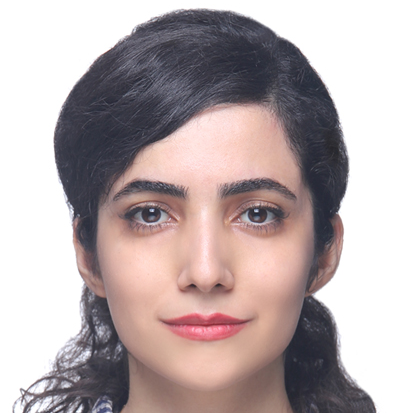
Ph.D. Candidate
Department of Electrical and Computer Engineering College of Engineering, Seoul National University.
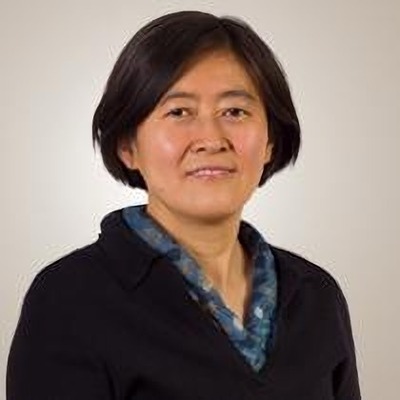
Associate Professor, Ph.D.
Department of Electrical Engineering and Computer School, Oregon State University.

Professor, Ph.D.
Department of Electrical and Computer Engineering College of Engineering, Seoul National University.